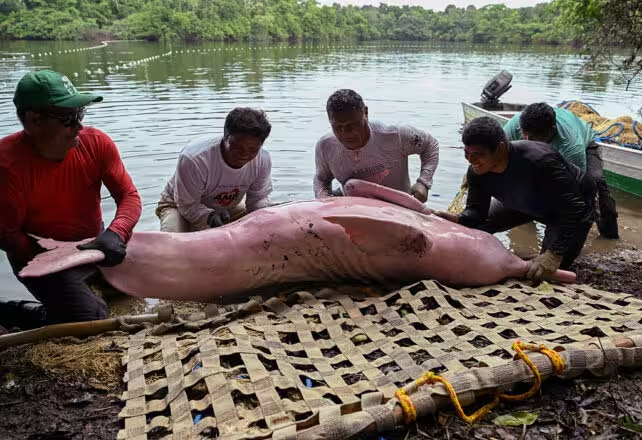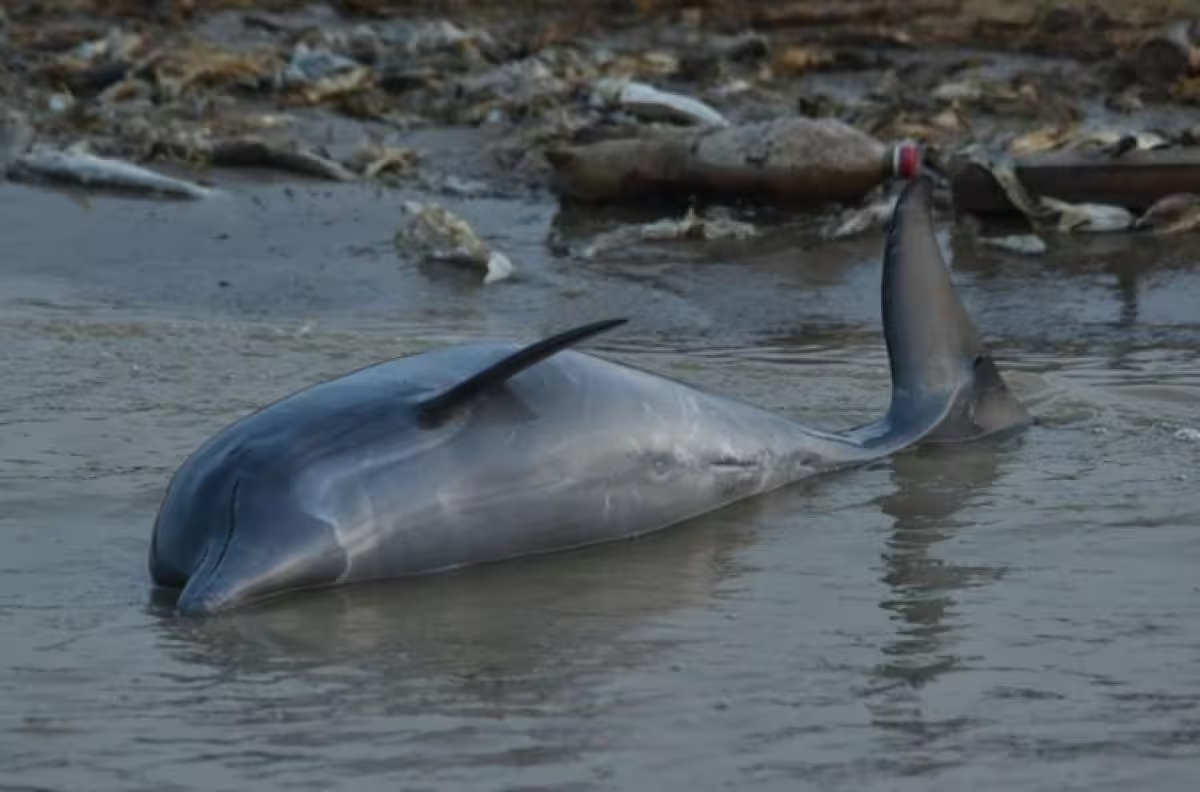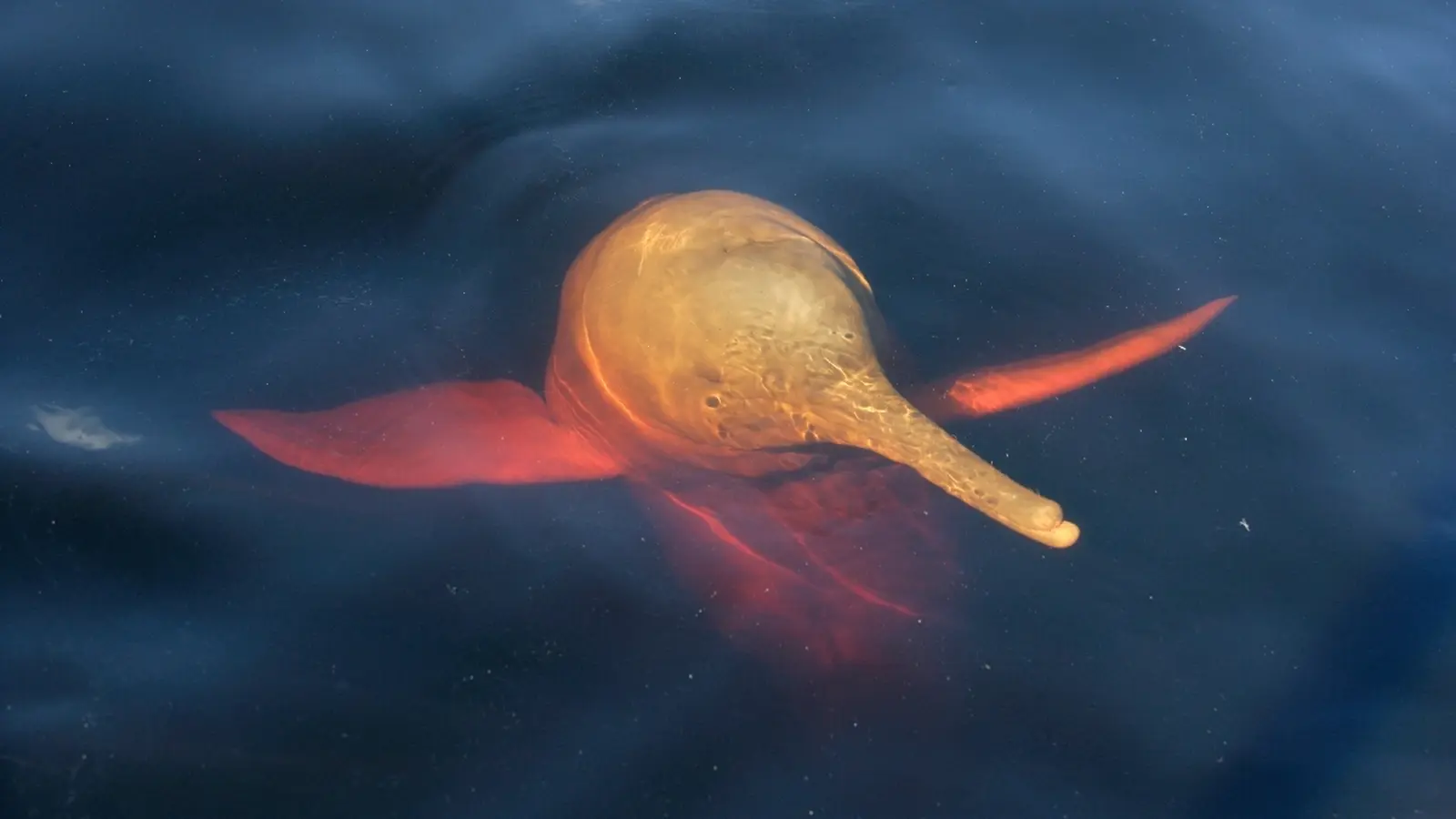5 Minutes
During the severe 2023 drought, several floodplain lakes in Brazil's central Amazon heated to temperatures higher than a hot tub, with Lake Tefé peaking at 41.0 °C (105.8 °F). That extreme warming produced a mass die-off: more than 200 dolphins, thousands of fish, and vast numbers of other freshwater organisms perished. Scientists say the event is a stark example of how a warming climate is reshaping freshwater ecosystems.
How an Amazon lake became an oven
Investigators from Brazil's Mamirauá Institute for Sustainable Development, led in part by hydrologist Ayan Fleischmann, combined satellite observations and in situ temperature recordings to reconstruct the episode. They found a rare combination of factors: prolonged, cloud-free solar radiation for 11 days, very low wind speeds, unusually shallow water levels driven by drought, and turbid, light-absorbing water. Those conditions trapped solar energy and drove lake temperatures far above typical ranges.

Local fishermen and field assistants place a captured Amazon river dolphin on a stretcher in Lake Amana, near Tefé, Amazonas, Brazil on 25 September 2025
Thermal stress and biological collapse
Temperature records from ten floodplain lakes showed alarming spikes: five reached above 37 °C and Lake Tefé hit 41.0 °C. But experts emphasize that it wasn’t only peak heat that mattered. Rapid swings of up to 13 °C in short timeframes imposed acute thermal stress on animals adapted to much narrower temperature windows.
Biologist Adalberto Val of the Brazilian Amazon Research Institute explained the physiological mechanism plainly: "When the water reaches 41 °C, the fish simply stop functioning: their enzymes get blocked, their metabolism collapses and they die." For river dolphins such as the endangered pink river dolphin (Inia geoffrensis) and tucuxi (Sotalia fluviatilis), the combined loss of prey, direct heat stress, and degraded water quality proved fatal.

A dead tucuxi dolphin in Lake Tefé, 2023
Climate drivers: El Niño, ocean warming and local conditions
The researchers link the event to broader climate dynamics. A widespread warming of the oceans, particularly in the North Atlantic, combined with a moderate-to-strong El Niño, amplified drought conditions across parts of the Amazon Basin. With less water in the floodplain and clearer skies, solar heating intensified. The team notes the drought’s unprecedented intensity is consistent with expectations for a warming planet.
Wider trends and long-term warming
Alarmingly, measurements indicate an average rise in floodplain-lake temperatures of about 0.6 °C per decade in the central Amazon since 1990. "The climate emergency is here, there is no doubt about it," Fleischmann told AFP while investigating the lakes. University of Greenwich ecologist Adrian Barnett, who was not part of the study, added perspective on the energy involved: "A 10 °C increase in water temperature is unparalleled. The volume of energy needed to achieve this in such huge volumes of water is jaw-dropping."
Ecological and human consequences
Within a single week the World Wildlife Fund reported an estimated 10 percent loss of local river dolphins, including 130 pink river dolphins and 23 tucuxis; later counts of carcasses approached 330. The die-off extended beyond dolphins—thousands of fish and countless invertebrates and amphibians also died, disrupting food webs and local fisheries. For riverside communities dependent on fish for food and income, the event had severe social and economic impacts.
Scientists warn that many of the Amazon’s freshwater systems are especially vulnerable because they store a significant fraction of the planet’s surface freshwater and support extraordinary biodiversity. John Melack, an ecologist at UC Santa Barbara, said: "We are concerned that these conditions are becoming more common. The implications for biodiversity and local communities are profound."
What this means for conservation and climate policy
The authors emphasize the limits of regional responses: while local emergency measures and conservation can help, preventing future mass mortalities will require global reductions in greenhouse gas emissions. The sequence of drivers behind the Amazon lake overheating—ocean warming, El Niño, and long-term climate trends—underscores that many ecosystem-scale changes are linked to planetary-scale forcing.
The research was published in Science and adds to a growing catalogue of climate-driven mass-mortality events worldwide, from coral reefs to terrestrial mammals. If current warming trajectories continue, scientists warn larger and more frequent ecosystem collapses are likely.
Expert Insight
Dr. Maria Ortega, a freshwater ecologist with experience in tropical ecosystems, commented: "These events are a wake-up call. The physiology of aquatic species is finely tuned to historical temperature ranges. Rapid warming episodes compress survival windows so dramatically that entire communities can collapse within days. To reduce future risk we need aggressive emission cuts alongside local strategies that maintain water levels and habitat complexity."
Source: sciencealert


Leave a Comment